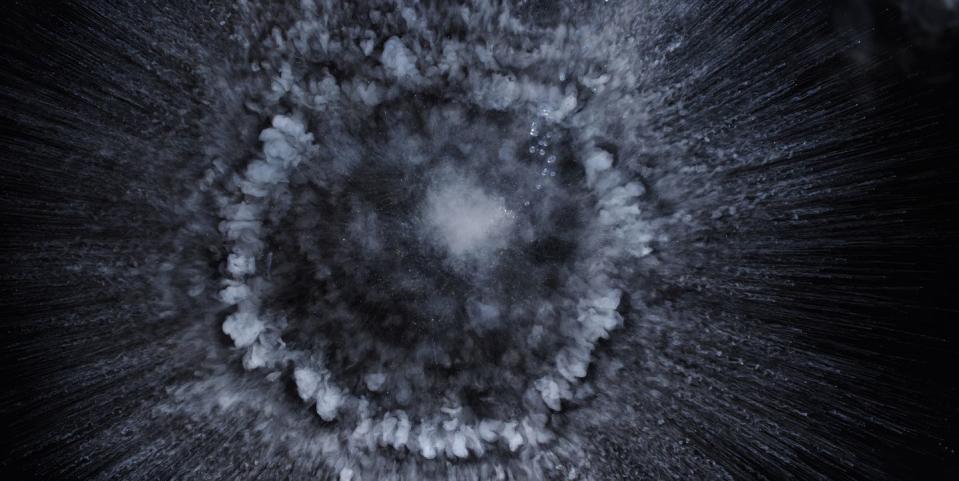Scientists Have Created Black Nitrogen

Scientists have cultivated an unheard-of form of nitrogen that forms crystalline layers.
Under pressure, gas elements can form unexpected and unstable allotropes.
"Black nitrogen" proves nitrogen has more than one allotrope after all.
Researchers have used a diamond anvil to smash nitrogen into a previously unseen form they call black nitrogen. The nature of nitrogen led researchers to believe this flat, crystalline form wasn't possible for the extremely abundant gas.
Black nitrogen is extremely fleeting and fragile, but its existence, the researchers say, shows that nitrogen has more in common with its periodic tablemates than scientists previously believed.
The name “black nitrogen” is from similar allotrope black phosphorus, which American Elements describes as “a layered semiconducting material similar in appearance to graphite with numerous uses in optoelectronic, semiconductor, and photovoltaic applications.”
Both nitrogen and phosphorus belong to the element family called the pnictogens, named from the Greek for “choke.” (Several people still die from accidental nitrogen asphyxiation each year.)
Where scientists used extreme cooling to make metallic hydrogen, black nitrogen was first superheated to over 7,000 degrees F. The researchers explain in their paper:
“Laser heating of pure nitrogen at 140 GPa in a diamond anvil cell led to the synthesis of a polymeric nitrogen allotrope with the black phosphorus structure, bp-N. The discovery of bp-N brings nitrogen in line with heavier pnictogen elements.”
What resulted were flat microlayers of zigzagging crystal structures, which not only resemble black phosphorus in structure and appearance, but appear to be conductive as well. But where black phosphorus is stable, the structure of black nitrogen quickly dissipates when either the pressure or the heat lets up.
That’s not to say there’s no possible application, but the likelihood is very slim for now. Even so, this is a big step for nitrogen.
For a long time, the researchers say, nitrogen has occupied a unique place in the periodic table compared not just to the pnictogens (group 15) but to carbon (group 14) and oxygen (group 16), too. In other groups, the topmost elements tend to behave more like the lowermost elements when scientists apply serious pressure in the lab, like carbon into diamonds. But not nitrogen.
In nature, nitrogen is so abundant, but only in exactly one allotrope: dinitrogen gas (two nitrogen atoms firmly bonded together), which is what forms more than three-quarters of our atmosphere. Before now, there was no “diamond” for nitrogen.
“This means there is no doubt about it: nitrogen is, in fact, not an exceptional element, but follows the same golden rule of the periodic table as carbon and oxygen do,” lead author Dominique Laniel explained in a statement. And as scientists continue to use new tools like extreme heat, cooling, pressure, and nanotechnology to push and pull chemicals into new forms, black nitrogen is another example of what is possible.
Although the black nitrogen isn't stable, demonstrating its existence is a guidepost, Laniel said:
“[N]itrogen remains a highly interesting element in materials research. Our study shows by way of example that high pressures and temperatures can produce material structures and properties that researchers previously did not know existed.”
You Might Also Like

